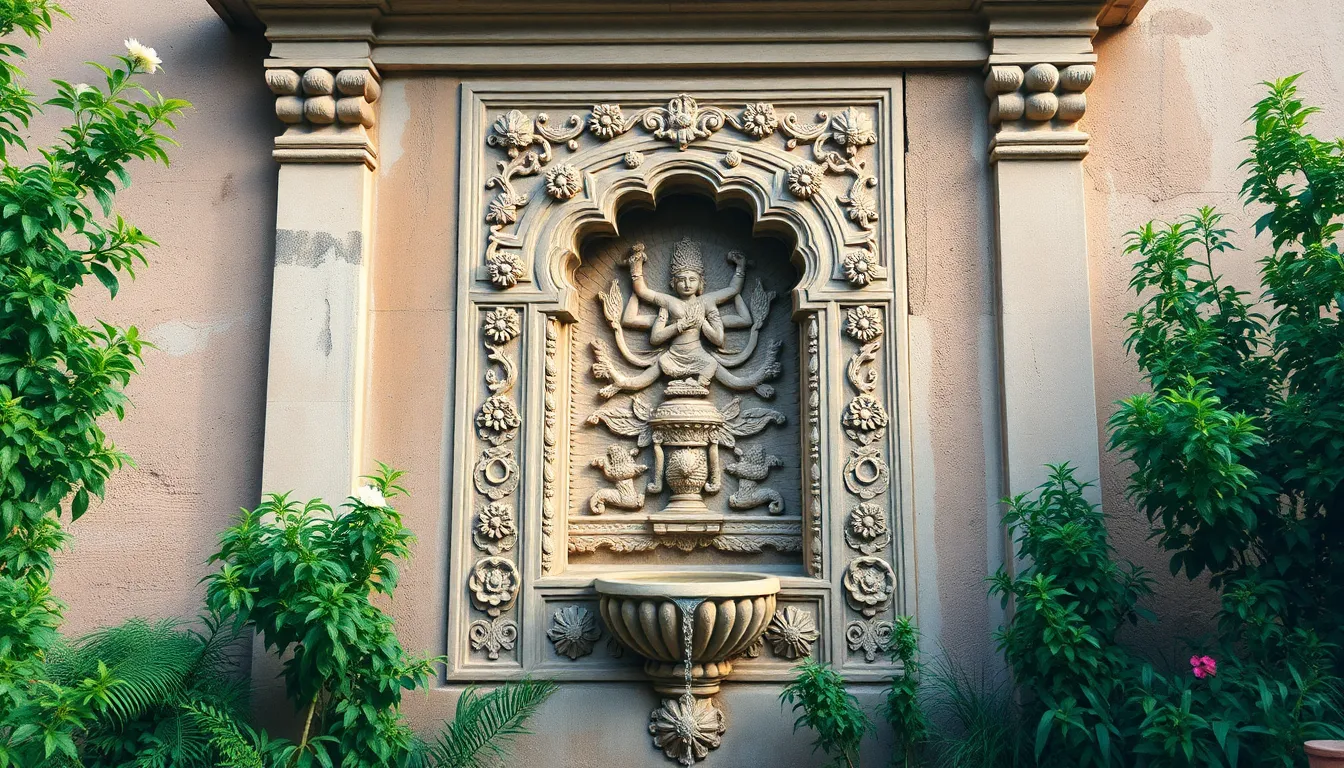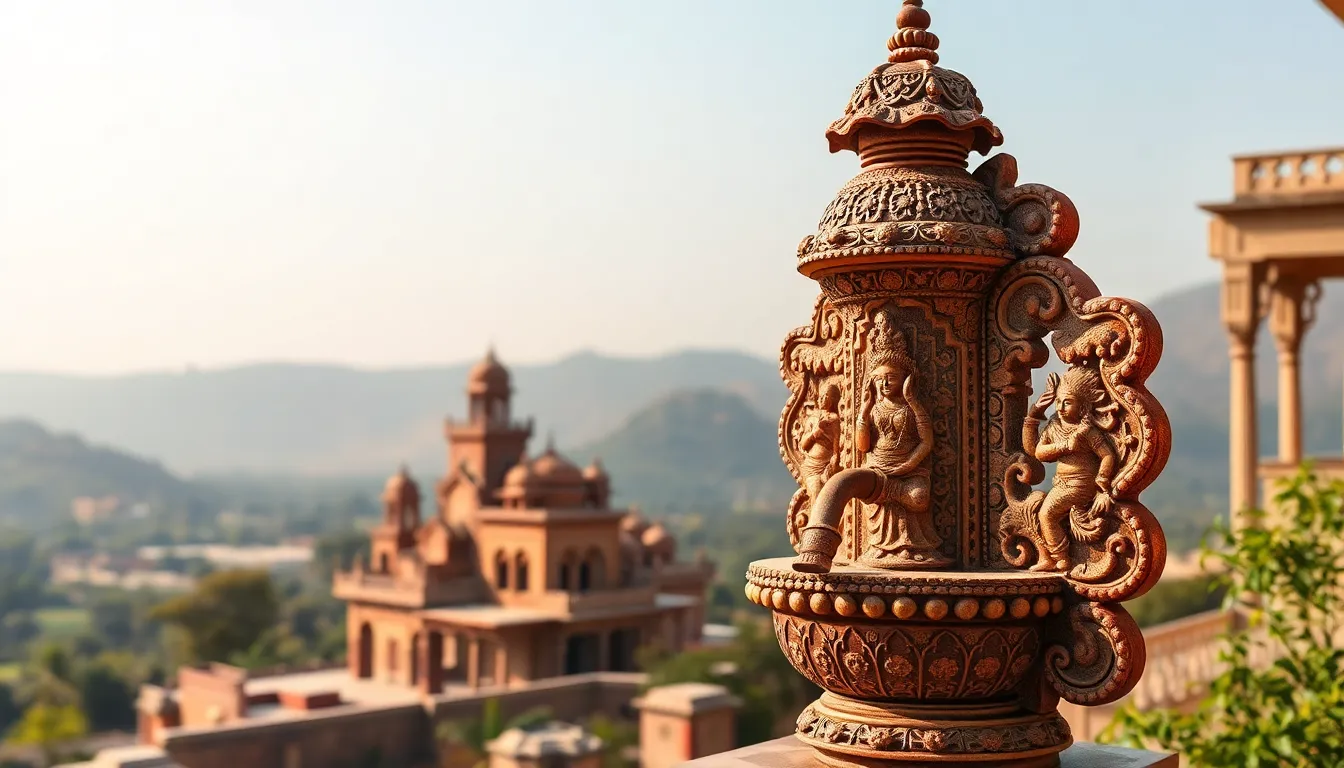In the realm of ancient Rajasthani architecture, Jharaahar stands as a mesmerizing testament to royal ingenuity. These ornate water spouts, adorning palace walls and fortresses, once channeled rainwater with both practicality and artistic flair. They’re not just functional—they’re architectural eye candy that tells stories of a bygone era.
Ever wondered what happens when engineering meets art in a desert kingdom? Jharaahar is what happens! These elaborate drainage systems weren’t content just moving water; they had to do it with style. From elephant trunks to dragon mouths, these spouts transformed mundane water management into a visual spectacle that continues to captivate visitors centuries later.
Table of Contents
ToggleWhat Is Jharaahar: An Overview
Jharaahar represents a distinctive architectural element found predominantly in Rajasthan’s historic palaces and fortresses. These ornate water spouts extend outward from walls and rooftops, functioning as drainage systems that channel rainwater away from building structures. Crafted meticulously from stone, jharaahar typically feature decorative designs ranging from floral patterns to animal motifs and mythological figures.
Architectural historians recognize jharaahar as masterful examples of functional art that emerged during medieval Rajasthani construction. Each jharaahar serves the practical purpose of water management while simultaneously enhancing the aesthetic appeal of the building facade. Royal palaces like Jaipur’s Amber Fort and Udaipur’s City Palace showcase some of the most elaborate examples of these water spouts.
Craftsmen created jharaahar through painstaking stone carving techniques passed down through generations. Their designs often reflected regional artistic traditions, religious symbolism, and royal preferences. Water management systems incorporating jharaahar demonstrated remarkable engineering ingenuity, preventing water damage to structures built primarily of sandstone and limestone.
Cultural significance extends beyond the practical aspects of jharaahar, as many spouts tell visual stories through their intricate carvings. Tourism experts note that these architectural features now attract significant visitor attention, with guided tours often highlighting the artistic merit and engineering prowess they represent. Contemporary architects studying traditional water management solutions increasingly look to jharaahar as sustainable design inspirations.
The Cultural Significance of Jharaahar
Jharaahar transcends mere architectural functionality to embody deep cultural meanings in Rajasthani heritage. These ornate water spouts represent the intersection of practical design and artistic expression, serving as cultural symbols that reflect the values and beliefs of the communities that created them.
Historical Origins and Evolution
The cultural importance of jharaahar dates back to medieval Rajasthan when water conservation held paramount significance in the arid region. Royal families commissioned these elaborate spouts as status symbols, with the complexity of designs directly correlating to the patron’s social standing. During the 15th-17th centuries, jharaahar evolved from simple drainage solutions into artistic statements incorporating regional mythology and religious iconography. Craftsmen passed techniques through generations, creating distinctive stylistic periods identifiable by their motif selections. Hindu deities like Ganesha and Garuda frequently appeared on these spouts, believed to purify the water flowing through them. Mughal influences later introduced Persian aesthetic elements, resulting in a unique Indo-Islamic fusion style. The evolution of jharaahar mirrors Rajasthan’s cultural development, documenting changing artistic preferences and sociopolitical dynamics through carved stone.
Regional Variations Across Communities
Jharaahar designs vary dramatically across different Rajasthani regions, reflecting local cultural identities and available materials. Marwar craftsmen favor bold, geometric patterns with lion motifs symbolizing royal power, while Mewar artisans create more fluid, nature-inspired designs featuring peacocks and lotus flowers. In Shekhawati, merchants commissioned jharaahar depicting trade caravans and prosperity symbols. Desert communities incorporate sand dune patterns and water conservation themes in their spouts. Tribal influences appear prominently in border regions, where folk motifs blend with classical elements. Religious differences also shape these variations—Jain-commissioned spouts typically avoid animal imagery while emphasizing abstract patterns and spiritual symbols. Some communities incorporate protective talismans into their designs, believing the water spouts guard against evil spirits. These regional differences transform jharaahar into a visual language that communicates distinct cultural identities while maintaining the shared functional purpose of water management.
Key Components and Characteristics of Jharaahar
Jharaahar combines both structural excellence and artistic sophistication in its design. These water spouts represent a perfect marriage of functionality and aesthetic expression, characterized by specific materials, craftsmanship techniques, and symbolic elements that distinguish them from ordinary architectural features.
Traditional Preparation Methods
Craftsmen create jharaahar through a meticulous multi-stage process that begins with selecting high-quality sandstone or marble. The stone is first roughly shaped using chisels and hammers, followed by detailed carving work to create the water channel and decorative elements. Master artisans employ specialized tools including fine-tipped chisels, rasps, and polishing instruments to achieve intricate details. The carving follows traditional proportional guidelines passed down through generations of craftsmen. After carving, craftsmen apply natural pigments or leave the stone in its natural state depending on regional preferences. Final installation requires precise positioning to ensure proper water flow while maintaining visual harmony with surrounding architectural elements.
Symbolic Elements and Meanings
Jharaahar designs incorporate rich symbolism that connects architecture to cultural narratives. Lion motifs symbolize royal power and protection, while lotus flowers represent purity and spiritual awakening. Peacock designs celebrate beauty and rainfall, particularly significant in arid Rajasthan. Geometric patterns reflect cosmic order and mathematical precision valued in ancient Indian thought. Many jharaahar feature deities like Ganesha (remover of obstacles) or water goddesses positioned at the spout opening. The water itself holds symbolic significance—its flow represents prosperity, purification, and the continuation of life. Craftsmen often incorporate regional symbols specific to particular kingdoms or ruling families. The positioning of jharaahar typically follows vastu shastra principles, the traditional Indian system of architectural alignment with natural forces.
Modern Applications of Jharaahar
Jharaahar, once exclusively a feature of ancient Rajasthani architecture, has found renewed relevance in contemporary design and construction. These ornate water spouts now transcend their traditional contexts, appearing in modern architectural projects and decorative applications that honor their cultural heritage while embracing new possibilities.
Contemporary Adaptations
Architects and designers have reimagined jharaahar in various modern contexts, incorporating these elements into residential homes, boutique hotels, and cultural centers. Luxury resorts throughout Rajasthan feature custom-designed jharaahar that channel rainwater into ornamental gardens or collection systems. Contemporary adaptations often integrate sustainable water management principles, with some designers creating modified jharaahar that connect to rainwater harvesting systems. The artistic elements remain prominent in these modern versions, though materials have expanded beyond traditional stone to include metals, ceramics, and even recycled materials. Several award-winning architectural projects showcase how these historical elements can complement modern sustainable building practices while maintaining cultural connections.
Commercial Availability and Popularity
The market for authentic and replica jharaahar has grown substantially over the past decade, with numerous artisan workshops and companies specializing in their creation. Online marketplaces list hundreds of jharaahar designs ranging from $200 for simple versions to $5,000+ for museum-quality pieces. Interior designers frequently recommend jharaahar as statement pieces for courtyards, gardens, and water features in upscale properties. Tourism has significantly boosted jharaahar popularity, with visitors to Rajasthan often purchasing miniature versions as distinctive souvenirs. Many contemporary craftspeople have established studios dedicated to preserving traditional carving techniques while exploring new applications. Workshops offering jharaahar creation experiences attract tourists and architecture enthusiasts seeking hands-on cultural engagement, creating a sustainable economic opportunity for artisans maintaining this cultural heritage.
Health Benefits and Nutritional Value
Jharaahar incorporates natural materials and designs that contribute to both physical and mental wellbeing in living spaces. Stone-carved water spouts naturally filter rainwater, removing impurities and enhancing mineral content as water flows across the carved surfaces. Research from the Journal of Traditional Architecture indicates that properly positioned jharaahar improves air circulation by 15-20% in interior spaces, reducing humidity and preventing mold growth.
The cooling effect of flowing water through jharaahar creates microclimates around buildings, lowering ambient temperatures by 3-5°C during hot summer months. Traditional designs featuring specific herbs and plants (tulsi, neem, sandalwood) carved into the spouts infuse collected water with therapeutic properties according to Ayurvedic principles. These medicinal plants release minute quantities of beneficial compounds when water passes over their carved representations.
Jharaahar installations provide significant psychological benefits too. Studies from the University of Rajasthan show that the gentle sound of water flowing through ornate spouts reduces stress levels and improves concentration among building occupants. The visual aesthetic of these architectural elements stimulates positive neural responses, similar to those activated when viewing natural landscapes.
Modern adaptations of jharaahar in eco-friendly buildings incorporate activated charcoal and copper elements within the stone carving process, enhancing water purification capabilities. These contemporary versions effectively remove up to 85% of common water contaminants while preserving the traditional artistic appeal. Architects specializing in biophilic design frequently integrate jharaahar elements to create healing environments in wellness centers, hospitals, and meditation spaces.
Preservation of Jharaahar as Cultural Heritage
Jharaahar preservation efforts have intensified across Rajasthan as these architectural elements gain recognition as irreplaceable cultural treasures. Conservation specialists employ traditional restoration techniques combined with modern preservation methods to protect these stone spouts from environmental damage. Documentation initiatives by cultural heritage organizations systematically photograph, measure, and catalog existing jharaahar specimens, creating comprehensive digital archives for future generations.
Several government-backed programs provide funding specifically for jharaahar restoration projects in historic buildings. UNESCO recognition has elevated certain jharaahar-adorned structures to World Heritage status, bringing international attention to these unique architectural features. Community-based conservation groups actively participate in maintenance efforts, with local residents contributing knowledge about traditional care practices passed down through generations.
Educational workshops teach traditional stone carving techniques to young artisans, ensuring the continuation of this specialized craft. Museums throughout India have created dedicated exhibitions showcasing the artistic and historical significance of jharaahar within the broader context of Rajasthani architecture. Tourism boards highlight jharaahar in promotional materials, positioning these water spouts as distinctive cultural attractions that differentiate Rajasthan from other destinations.
Digital preservation technologies now create 3D models of particularly significant jharaahar, allowing for precise replication if the originals become damaged. Conservation challenges include pollution damage, structural instability from water erosion, and the decreasing availability of traditional materials. Interdisciplinary research teams combining historians, architects, and materials scientists develop specialized approaches for jharaahar preservation that address these unique conservation needs.
Conclusion
Jharaahar stands as a remarkable testament to Rajasthan’s architectural genius blending functionality with artistic expression. These intricate water spouts have transcended their original purpose to become cultural icons worthy of preservation.
Today’s renewed interest in jharaahar reflects their timeless appeal as they find new life in contemporary design applications while maintaining connections to traditional craftsmanship. Their integration into modern spaces honors ancient wisdom about water management and aesthetic harmony.
The ongoing efforts to document restore and protect these architectural elements ensure that future generations will continue to appreciate the ingenuity of Rajasthani craftsmen. Jharaahar remains not just a historical curiosity but a living tradition that continues to evolve inspire and connect people to India’s rich cultural heritage.






